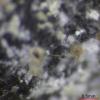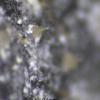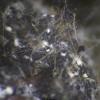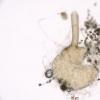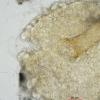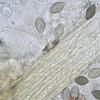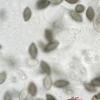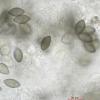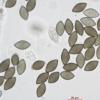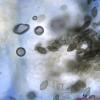
16-11-2025 21:09
 Robin Isaksson
Robin Isaksson
Anyone recognize this acc. to pictures.? Found on

18-11-2025 13:59
Nogueira HéctorNovember 14, 2025 Brazuelo (León) SPAIN Hymenosc

17-11-2025 19:14
herman lambertApothécie discoïde 0.6 cm diam., orangeFace hym�

17-11-2025 21:57
Philippe PELLICIERBonjour,Récolté sur bois de feuillu mort dur, no

17-11-2025 21:46
Philippe PELLICIERBonjour,Récolté sur bois pourrissant de feuillu

14-11-2025 16:26
 Marian Jagers
Marian Jagers
Hello everyone, On dead wood of Cytisus scoparius

15-11-2025 23:22
Mario FilippaHello,this is what I think to be Hymenoscyphus mac

15-11-2025 20:25
 Riet van Oosten
Riet van Oosten
Hello, Found by Laurens van der Linde, Nov. 2025
Found in Bern, Switzerland, near the river Aare on deer dung in culture, after 2 weeks.
I think it is a Melanospora species.
Perithecia roundish, about 350 my in diameter. Beak 250 to 500 my long, 50 my wide. Ascis very volatile. Spore-bearing part about 50 x 30 my with a clearly separated slender cylindrical stalk. 4 or 8 spores. Spores olive brown, elongated lemon-shaped, with a small germinal pore at both ends. No germinal fissure. Apical ends of the spore minimally hyaline.
Spores (19.6) 22 (23.1) x (11.2) 12 (12.8).
In von Arx & Müller - Die Gattungen der amerosporen Pyrenomyceten M. leucotricha is an option, but I am unsure.
Am I right with Melanospora and can someone help me with the species?
Greetings, Simon

Your mushroom may be a little immature, but I actually think it is Melanospora zamiae. M.brevirostris is close but the spores are larger and the beak is shorter.
Michel.
Thank you very much for your help.
In the meantime, I have noticed that M. leucotricha is a synonym of M. zamiae (Yasmina Marin-Felix et al. / MycoKeys 44: 81-122 (2018)).
In von Arx & Müller, die Gattungen der amerosporen Pyrenomyceten 1954, M. zamiae and M. leucotricha are two species. The main difference between the two species in this work is, in my opinion, the presence of germinal clefts in M. zamiae.
I have noticed that the very thin-walled spores of M. zamiae in cotton blue can colapse very quickly and give the impression of germinal clefts. Perhaps this was misinterpreted at the time.
Greetings, Simon

